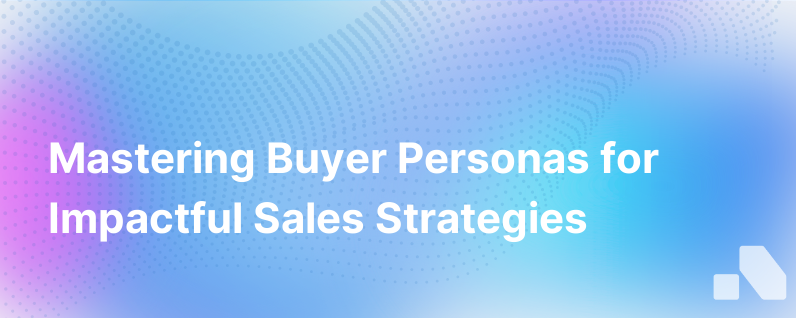
It's an oft-repeated adage in the business world: know your customers. But how can a business go about cultivating this knowledge? Enter the buyer persona. In today's complex markets, understanding your customers could be the deciding factor between establishing a rewarding connection and swapping your fishing pole for another, potentially fruitless, cast.
In this guide, we'll enlighten you on what a buyer persona is, why it matters, and how to create one that is both comprehensive and effective.
What is a Buyer Persona?
A buyer persona, also known as a customer avatar, is a fictional yet realistic depiction of your ideal buyer. It outlines your target audience's demographics, habits, pain points, needs, goals, and motivations in as much specific detail as possible.
Distinct from traditional market segmentation, personas represent a more personal approach. They humanize abstract data, enabling you to visualize your ideal customer as a real person - making it easier to craft targeted strategies, marketing messages, and solutions.
Why do Buyer Personas Matter?
Creating a buyer persona isn’t just busywork; it’s an exercise that pays dividends across your business.
- Improved Strategy: From product enhancement, marketing initiatives, sales strategies to customer service methods, an insightful customer persona can allow you to tailor your efforts and investments most effectively.
- Effective Marketing: Armed with in-depth knowledge of your buyers, you can craft marketing messages that speak directly to their needs, fears, and desires, thereby increasing engagement and conversions.
- Sales Enablement: Sales representatives can utilize well-defined personas to plan their interactions, anticipate objections, and devise effective responses that resonate with potential buyers.
How to Create a Buyer Persona
Constructing a detailed buyer persona generally involves a 3-step process of research, analysis, and synthesis. Here’s a look at each of these steps.
Step 1: Research This step helps you gather diverse, valuable insights about your customers. Incorporate both quantitative and qualitative research, leveraging surveys, interviews, observations and existing customer data. This exploration should extend beyond demographic details to encompass more nuanced behavioral and psychological data.
Step 2: Analyze Next, sift through your data to identify patterns and trends. Are certain pain points more prevalent among a specific group? Do preferences differ greatly by age or profession? By analyzing in depth, you can identify the most critical and common elements among your customers and prospects.
Step 3: Synthesize The final step involves bringing together relevant data to create your buyer persona. It's like constructing a puzzle from complex pieces. Each nuance broadens the understanding of your ideal customer, helping you design a persona that mirrors the real-life buyers you are targeting.
What to Include in a Buyer Persona?
Remember, a truly effective buyer persona extends beyond basic demographic details. Here's what to include:
- Demographic Information: Age, income, location, job title, education, and other basic demographic information can act as your starting point.
- Behavioral Insights: Movement patterns, shopping habits, online activity, and consumption preferences offer rich insights into your buyers' behavior.
- Pain Points: What challenges does your buyer face? How does your product/service alleviate these pain points?
- Needs and Goals: Understanding your potential buyer’s objectives helps in aligning your product with their pursuits.
- Preferred Platforms: Which websites, social media platforms, or news outlets does your buyer frequent? This data can help you approach them where they are most comfortable.
Let's consider an example. A B2B tech startup might create a buyer persona named "IT Manager Mike." Mike is a 35-year-old tech-savvy professional who values efficient, scalable solutions for his team. His greatest challenge is getting buy-in from upper management for new technology investments. He spends his free time reading tech blogs and industry news.
Knowing this, the startup can curate targeted content for IT Manager Mike that addresses his exact pain points and goals, using the platforms he prefers.
Conclusion
An articulately designed buyer persona is like a roadmap to your customers’ hearts and minds. It lays bare their inner workings, fostering empathy and enabling precise targeting. In today's highly competitive markets, successful businesses not only know their customers but deeply understand them. And generating a thoughtful, layered buyer persona serves as the potent weapon in your arsenal to win the marketplace battle on your terms.
If this seems overwhelming, don't worry. Tools like Aomni can simplify the process of creating buyer personas. Using AI, Aomni analyses your customer data, identifies patterns, and creates buyer personas with precision, speed, and minimal effort. Simplifying the process allows you to focus more on utilizing these personas to grow your enterprise.